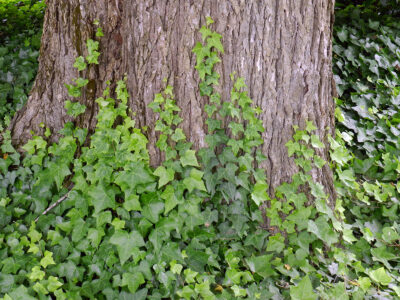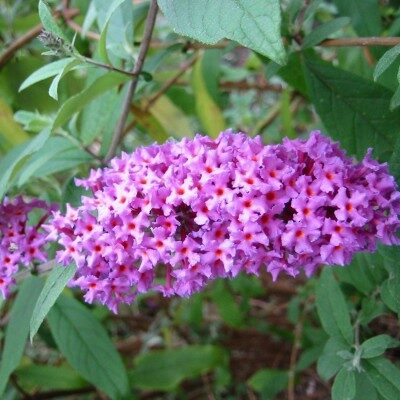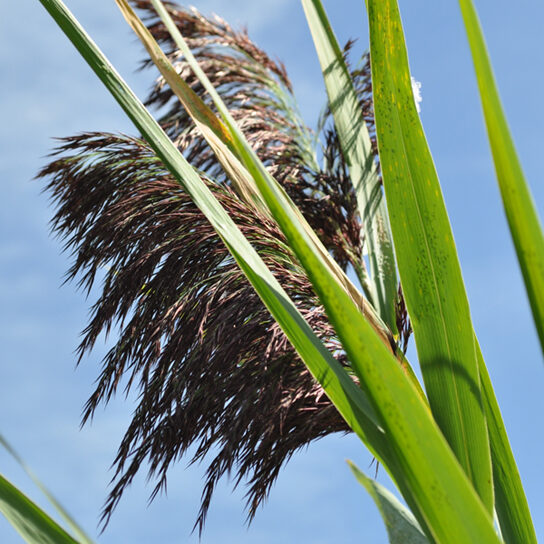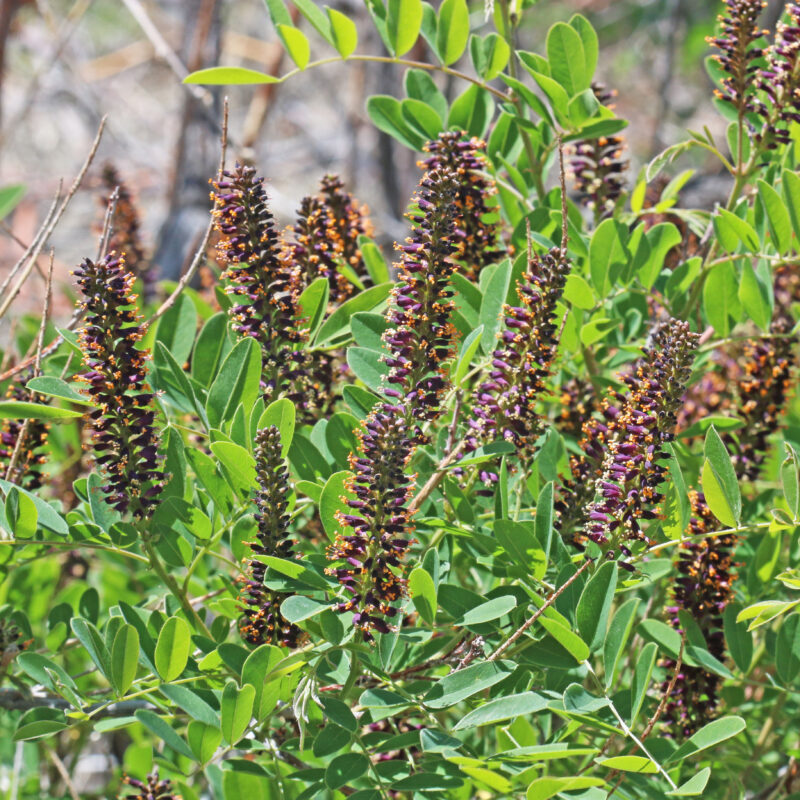
English ivy (Hedera helix L.) and Irish ivy (H. hibernica) are perennial plants introduced to the U.S. by European immigrants. They are woody, evergreen vines with waxy leaves and green or white flowers that produce black berries. Ivy crowds out native plants and climbs up trees and shrubs. This deprives trees of sunlight and water and eventually kills them. The berries can be toxic to pets.
The best control method is to pull them out by hand when the soil is moist. For ivy growing on the ground, pull vines by hand and roll up the matted plants into a bundle. Chop the bundle into many pieces to prevent resprouting. For ivy growing up a tree, cut the vines around the trunk of the tree at waist level. Then pull away the bottom part of the cut vines back to the forest floor. Roll up the matted vines away from the trunk. Do not pull upper vines down from the tree. Doing so can remove bark from the tree or cause branches to fall and lead to injury. The cut vines in the tree will eventually die and become harmless. Ivy is vigorous and grows fast so you will need to return to the same area and pull vines several times a year.
Read more about English and Irish ivy in this brochure.
Some native plants you could plant as an alternative to ivy are:
- Beach strawberry
- Wood strawberry
- Sword fern
- Prostrate ceanothus
- Kinnikinnick


